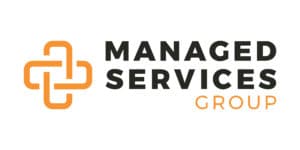Softwares will promise you the world on a platter. However, what they deliver is often limited by how well you use it. In other words, you sometimes have to fit your business to the product they’re selling.
Conversely, a managed service provider can only provide solutions to problems they can diagnose. They listen to your business needs first but require spending and trust before fully integrating software that makes the most sense for your business.
If you’re getting the sense that these two I.T. concepts are deeply connected, you’re not wrong. In this blog, we will go over the differences between these two services and why you need to implement them both when expanding your technology strategy to suit the needs of your growing organization.
What Do We Mean By “SaaS?”
Software-as-a-Service began around the time of cloud computing. Here, we see the first instances of consumer-facing applications hosted offsite in better-managed environments.
Software-as-a-Service (SaaS) is a software licensing model in which users pay a monthly fee for access to software hosted on external servers rather than on internal servers. However, this may differ from subscription software in terms of a few key features.
For instance, a SaaS often includes a delivery platform where solutions are mediated (like how Grammarly edits documents on their site, or how a CRM is hosted on non-local servers), whereas subscription software is hosted locally and access is mediated through a payment/licensing structure (like Microsoft Office 365 if you were to pay for only the tools and not the cloud hosting).
In SaaS, users enter the system using their unique username and password credentials and access the service using a web browser. Instead of installing any software on their own computer, users may access the application over the Internet.
Famous examples of SaaS applications and providers you may have heard of or use daily:
- Dropbox – File sharing solution.
- Hubspot – A leading CRM with multiple features.
- Salesforce – A CRM with advanced analytics.
- Slack – A business communication platform.
- Canva – User-friendly graphic design tools.
- G Suite – A comprehensive set of business and office tools.
- Cloud-based Microsoft Office 365 – Cloud-based hosting of Microsoft tools and applications.
Managed Services Explained
The technique of outsourcing the responsibility for monitoring and anticipating the need for a variety of processes and tasks in order to enhance operations and cut costs is known simply as managed services (with a managed services provider, known in short as an MSP).
This service is an answer to the often inefficient break/fix or on-demand outsourcing model, in which the service provider conducts on-demand services and only charges the client for the job completed.
Under this model, the client or customer is the entity that owns or has direct management of the organization or system being managed. Meanwhile, the managed services provider is the underlying service provider that delivers the managed services along with troubleshooting and support. A contractual service-level agreement binds the customer and the MSP, stating the relationship’s performance and quality standards.
Due to this contract, it is imperative to work with clear expectations and an experienced team. Your offboarding, should it occur, must be seamless to prevent downtime, data loss, or assets held in security limbo.
Do I Need Both?
Depending on the size and interconnectedness of your organization, a single SaaS platform subscription may be sufficient. Suppose you have a single accountant building invoices on their device that are then emailed to a small admin team.
You could bounce these invoices back and forth for a couple of weeks and rely on your email provider’s built-in data hosting, but you can imagine how this system may break down with more points of access and team members.
At this point, a SaaS solution like a CRM might be mandatory. However, depending on your industry, you may have to introduce new applications, manage the passwords for all of them, and continually monitor for data weak points or process-halting service outages in case of single-access point failure.
It is here that a managed service provider can save you money—even when signing with them into a contract. By sourcing the right kinds of applications and layering them safely, you are offered a better workflow, more robust data security, and, perhaps best of all, less time spent on the phone negotiating contracts and demonstrations with pushy salespeople.
When selecting your I.T. partner (SaaS or a managed services partner), you are shopping for experience. The problem is that with all of the different hats a managed services provider wears throughout your contract, it can be hard to find the right fit. Similarly, software can’t be made to change its spots—whatever you choose might inadvertently lock you into its limited features.
Finding the middle ground is why a collaborative approach is necessary. Working with a team Managed Services Group transforms your strategy in terms of business and technology together. With the right business and technological sense, you can save on monthly contracts, acquire and implement new solutions effortlessly, and have the financials to prove you’re on the right track. Better yet, in working together, your goals evolve mutually from new problems to solutions every single day.
If you’re looking to explore SaaS solutions or managed services further, give us a call. We’ve been around the block a few times and are happy to help you with all of your technology and business questions.









